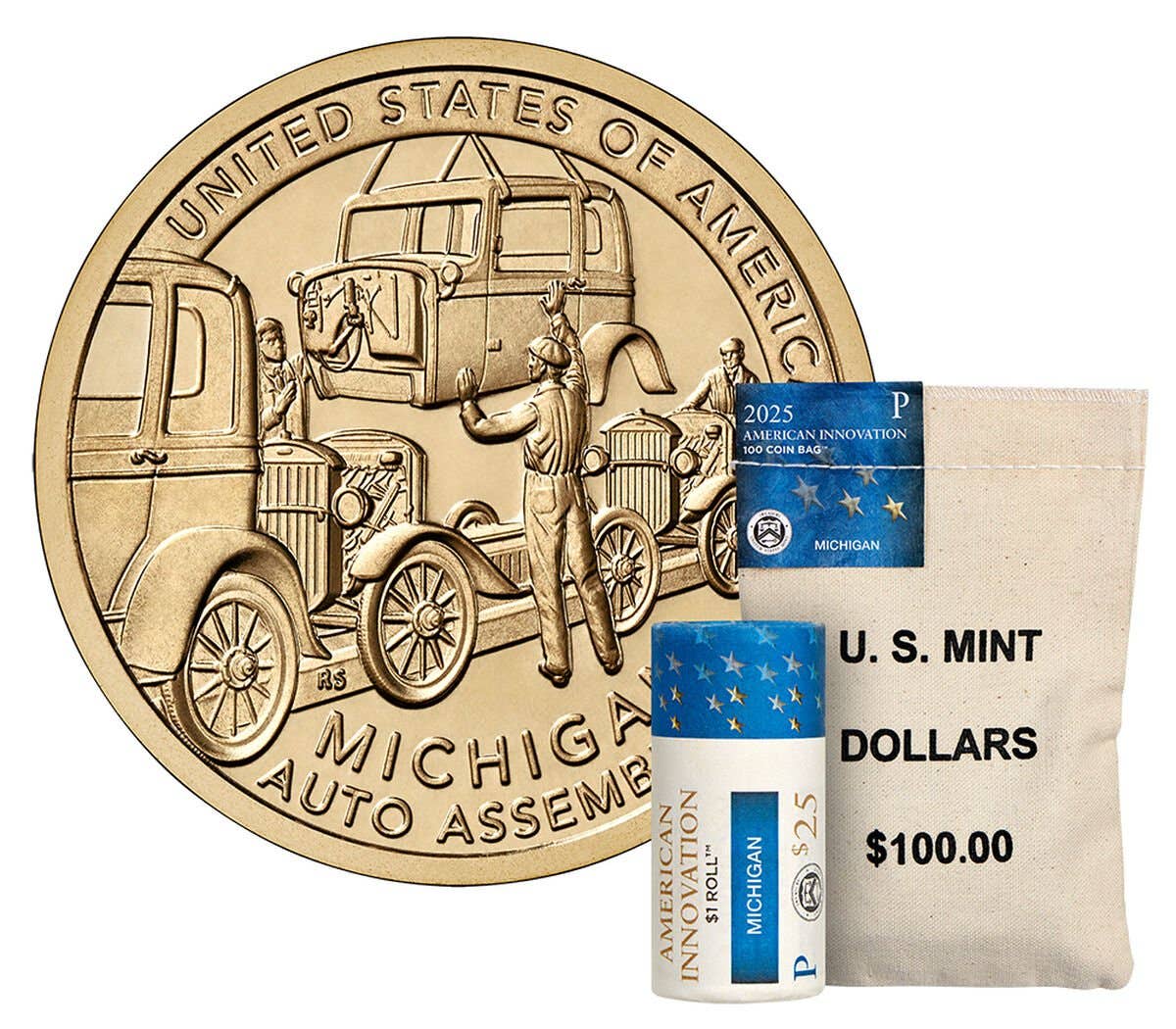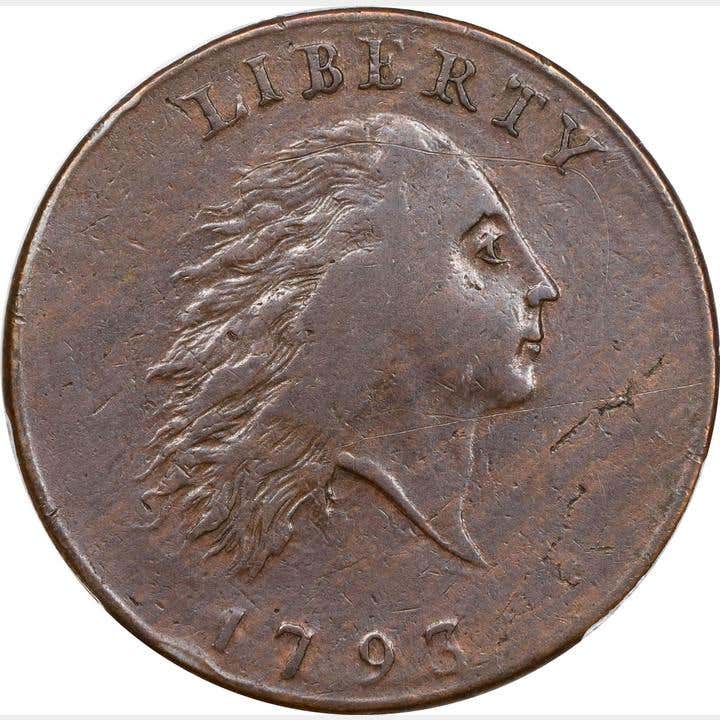Crisis of Civil War bred nickel 3 cents
The copper-nickel 3-cent piece does not get much attention today. The focus more often is on large coins like Morgan silver dollars or Saint-Gaudens gold $20s.
This article was originally printed in Numismatic News.
>> Subscribe today!
The copper-nickel 3-cent piece does not get much attention today. The focus more often is on large coins like Morgan silver dollars or Saint-Gaudens gold $20s.
Since 1965 when the coinage act of that year removed silver from the dimes and quarters and replaced the metal with copper-nickel clad alloy, that sort of prejudiced collectors against anything made of the alloy even from the historic past.
If you are looking for an interesting collection from the 1800s with many affordable dates, the copper-nickel 3-cent piece has a lot to offer. It’s an interesting coins and a historic one, which while short-lived was in production for an important period in American history.
The idea of a 3-cent coin did not come naturally to the United States. Certainly with a large cent being larger than a quarter, it would have not seemed appealing to have an even larger copper denomination. Also, if a 3-cent piece had been considered in silver, it would have been less than a third the weight of the 10-cent coin – and that would have made it positively tiny as they found out in 1851 when the first silver 3-cent pieces were struck.
It should come as no surprise to modern collectors, therefore, to learn that there was apparently no consideration of a 3-cent denomination back when the first denominations were authorized in 1792. There was no U.S. Mint at the time and once one was established, it was not capable of producing even the denominations that were authorized let alone a 3-cent piece.
In reality the 3-cent piece while oftentimes joined with the other denominations no longer in production such as the half cent, 2-cent piece and 20-cent piece has its own history as do the others. The half cent was approved in 1792 and had somewhat sporadic use until 1857 when it was discontinued.
In the case of the 2-cent piece it seemed to be an idea waiting for its time to come. It was not approved in 1792 but by the early 1800s there was a proposal in the Congress which actually was gaining support before the Mint director raised potential problems with the proposed alloy. That would stall the idea for a few decades, but it was considered again in the 1830s, but that time, too, it was not approved. Ultimately. The Civil War would produce an emergency where the two-cent piece could help and that would prove to be the case with a copper-nickel three-cent piece as well.
The idea of a 3-cent piece did not really surface until the late 1840s. At that time there were problems on the horizon as the discovery of gold in California had upset the normal gold-to-silver ratio. As that was happening, a congressional committee was looking into the idea of new denominations. One of the denominations being considered was a two and one-half cent piece, which sounds ridiculous, but actually made some sense as at the time there were still Spanish issues in circulation with one of the most frequently encountered being the “bit,” which as the eighth part of the Spanish milled dollar was valued at 12.5 cents. Under the circumstances, the 2.5-cent piece if approved would allow users to make change for a bit that didn’t involve bulky large cents and half cents. The proposal was not approved perhaps in part because Congress was hoping to get the Spanish silver removed from circulation. This was finally achieved in 1857 except in pockets of the West.
As silver coins started to disappear from circulation because they were being hoarded after the 1848 gold discovery in California, the underlying reason was the upset gold-silver ratio meant silver coins cost more than their face value to be produced. There should have been congressional action to slightly reduce the amount of silver in the silver coins. The Congress, however, had a track record of moving very slowly with such reductions. The amount of gold in gold issues had needed a reduction for more than a decade before any action was taken in 1834.
Things were no faster when it came to silver. Rather than reduce the amount of silver, the Congress instead authorized a 75 percent silver 3-cent piece. The claim at the time was that it would help make change for the new lower priced postage first class stamps. It was a classic case of political spin as making change for postage stamps, which relatively few used anyway, was hardly a significant problem. It did, however, perhaps make the new denomination look like a public service and not a debasing of the coins, thus making it a better political option.
As it turned out, the 75 percent silver 3-cent piece worked although only in a limited way. It did circulate at a time when no other silver coins would, but it could not be expected to solve all the problems presented by a lack of other silver denominations. Eventually, the Congress had to face the fact that it needed to act, which it did in 1853, by reducing the amount of silver in the regular issues and increasing the silver to 90 percent in the new 3-cent piece.
With the change to a 90 percent silver 3-cent piece with the 1854 issue, there was still the problem that the denomination was not really needed for making change. What little lingering problem there might have been because the copper half cents and large cents were bulky was solved in 1857 when the new and smaller Flying Eagle cent was introduced. The lack of demand for the silver 3-cent piece is clearly seen in decreasing mintages during the 1850s.
The silver composition of the 3-cent piece was to set it up for future problems and they were not long in coming. With a silver composition, if there was another time of massive hoarding even the small 3-cent piece was going to hoarded right along with the other silver denominations. That problem was to surface the minute the first gun was fired in the Civil War in 1861.
This hoarding was, if anything, worse than had been seen in the early 1850s. The 1850s hoarding was driven by economic considerations that could be solved. The Civil War hoarding was driven by fear as the outcome and consequences of the conflict were unknown. It was not only silver and gold that were hoarded but even copper-nickel Indian Head cents. Worse, there was no way of solving the problem other than ending the conflict and that was not possible until the long struggle played out on the battlefields. In fact, if anything, the early years of the war suggested than if anyone was to win the war quickly it would be the Confederate States of America.
As the war dragged on, the situation became less tolerable. To conduct regular commerce people resorted to using postage stamps, tokens and Fractional Currency, which they definitely did not like. The fact that they were hoarding cents simply made a bad situation worse. The first steps were taken with the approval of a change in the composition of the cent from copper-nickel to bronze. Bronze was also approved for a new two-cent piece. But even this change was not implemented until 1864.
The change from copper-nickel in the cent was not exactly music to the ears of a fellow named Joseph Wharton. We may not realize it, but even by the Civil War there were significant efforts on the part of lobbyists to get what they wanted from the Congress. Wharton was part of that tradition as it was his purpose to get the government to use nickel wherever possible and that included coins. Realistically, there was no such thing as a copper-nickel coin after the alloy was changed for the cent, which Wharton did not like as he just happened to have a small interest in the matter as he owned the only functioning nickel mine in the United States in Lancaster Gap, Pa.
Actually Wharton was not unusual in American history or even in the 1860s. The mining interests in the West had championed the idea of a new gold dollar and double eagle back in 1849. They had also gained approval for a new $3 gold piece a few years later and had only been stopped when they also made proposals for $25, $50 and $100 gold coins. Wharton had the same idea but with a different metal.
Wharton had been championing the idea of using nickel for years and he had a number of important friends in Congress and in the middle of the hoarding crisis they took action to approve a 3-cent piece with a 75 percent copper and 25 percent nickel composition as well as a 5-cent coin with the same composition. In both cases it was felt that without silver the coins could circulate and in both cases that proved to be the case. In fact, the composition worked so well that even today the composition of the nickel is the same as the one that was approved back in the 1860s.
Once approved the new copper-nickel 3-cent piece was rushed into production with an 1865 mintage of 11,382,000 pieces. That mintage was despite the fact that the silver 3-cent piece was still technically in production, although with the suspension of specie payments and the hoarding, the mintages of the silver 3-cent piece were small.
Actually the situation in 1865 was interesting as with the addition of the copper-nickel 3-cent piece the United States had a silver and copper-nickel 3-cent piece as well as Fractional Currency of the same denomination. It was an ironic situation when only 15 years earlier there had been no coins of the denomination.
The arrival of the copper-nickel 3-cent piece would basically spell the end of the silver 3-cent piece, which would officially be discontinued in 1873. There is probably a case to be made that the silver three-cent piece was on it's way out anyway, but the copper-nickel 3-cent piece certainly did not help it and it did allow the Fractional Currency of the denomination to be more quickly removed from circulation. The impact on the silver 3-cent piece is seen in its 1865 mintage of just 8,500. Until the end in 1873, the mintages would be low.
Though the copper-nickel three-cent piece had a large mintage in 1865, it would experience some of the same problems as the silver version. The mintage would drop off quickly as there was limited demand. Introduction of the nickel in 1866 also reduced demand of the 3-cent copper-nickel coin.
The 1866 copper-nickel 3-cent mintage was still 4,801,000 pieces, but that was down from the first year and the 1867 total would be another million pieces fewer than 1866. In 1871 there would be the first copper-nickel three-cent piece to have a mintage of less than 1 million pieces.
The trend of lower mintages would not be a perfect pattern There would be ups and downs. In 1873 when the silver 3-cent piece was officially eliminated there would be another mintage of more than 1 million of the copper-nickel pieces and that would happen again in 1881. Generally speaking, however, the mintages were low and slowly declining as the 3-cent piece no matter what its composition just was not playing a major role in commerce.
The mintage pattern makes for a collection that can be divided into sections. The coins of the first years are available and at low prices with no G-4 from 1865-1876 topping $21. In fact, some of those dates are good deals as the 1875 had a mintage of just 228,000 while the 1876 was just 162,000 – and those totals are well below something like a 1916-D Mercury dime, which has a $1,000 price in G-4. Certainly the demand for the 1875 and 1876 copper-nickel three-cent piece is far less than for a 1916-D Mercury dime, but the fact remains at today’s prices the copper-nickel 3-cent pieces are excellent values on low mintage dates.
With the exception of the higher mintage 1881, the years after 1876 are much tougher. Two dates that stand out are the proof-only 1877 and 1878, which had mintages estimated at 900 for the 1877 and 2,350 for the 1878. Those mintages result in Proof-65 prices of $3,750 for the 1877 and $1,200 for the 1878.
The prices of most of the lower mintage business strikes from the period are very reasonable. While certainly higher, when you consider the mintages you have to feel you are getting good values.
The 1883 with a mintage of 10,069 is a good example as it lists for $200 in G-4. The 1889 meanwhile with a mintage of 21,561 is just $90 in G-4. The most expensive business strike of the period is the lowest mintage 1885, which is $470 in G-4. The 1885, however, had a mintage of just 4,790 and it is not often when you can find a coin with a mintage of less than 5,000 for under $500 in G-4.
There was another proof-only date in the form of the 1886, but it had an estimated mintage of 4,290, which was high for a proof and that results in a price of $720 in Proof-65 as with proofs the chances of survival are far better than they are for top grade business strikes. In fact, many proofs of the period for dates where there are both proofs and business strikes can be found at surprisingly affordable prices and that even includes the 1887/6 overdate, which is just $940 in Proof-65.
With limited demand a copper-nickel 3-cent piece collection is possible in upper grades at reasonable prices. For example, in MS-60 other than the proof- only dates the only business strikes even close to $1,000 are the low mintage 1884 and 1885 and they are $800 and $900, respectively. In the case of other low mintage dates, the prices are usually $525 or less with some of the earlier dates at just $100.
Things are more complicated in MS-65 as realistically finding some dates in MS-65 can be a challenge. The cost is sometimes not the issue as much as the chance to buy one of the better dates. The most expensive is the 1884 at $6,250 while the 1883 is $4,850 and the 1885 is at $2,300. There are a couple other dates that are higher like the 1876 at $1,550, but generally speaking the set is not as expensive as might be expected.
There is an option that might surprise some and that is to assemble a set in proof as in the case of many dates a Proof-65 is much more available and much less expensive than an MS-65. And don’t you deserve such a beautiful set?
It was a simple case of the proofs being obtained by collectors at the time of issue and then these coins received better care, leading to greater numbers that have managed to survive to the present day. The price differences can be striking with a Proof-65 1883 at just $690 while an MS-65 is $4,850. In the case of the 1884, which is $6,250 in MS-65, it is just $700 in Proof-65. The prices are no mistake as PCGS has seen just eight examples of the 1883 and six of the 1884 in MS-65, but the proof totals of either are in the hundreds.
The one tougher proof is the 1865, which is currently listed at $6,500 in Proof-65 as proof sales when the copper-nickel 3-cent piece was introduced were lower. Even at that price, the 1865 is still relatively inexpensive when you compare it to the proof rarities in other denominations where a set in proof might also be an option as the 1864L Indian Head cent or 1867 with rays Shield nickel are much tougher and more expensive.
Not many think about, it but realistically the copper-nickel 3-cent piece is a set that is well worth considering in proof as roughly one-half the dates are under $1,000 and some are barely over $500. For a set in top grade, it is really a bargain.
Whatever your decision in approaching the copper-nickel 3-cent piece, it is a set that is an interesting reflection of its times. It was a coin that was helpful in a time of national crisis, but as time passed it became clear that the denomination was not really needed, That produced its final production in 1889. It has since found place in history as a lesser known but certainly interesting denomination.
Collectors of today should not overlook the series as collectors of the future who have no hang-ups about copper-nickel will see the low mintages and wonder why nobody jumped on them sooner.
More Coin Collecting Resources:
• Subscribe to our Coin Price Guide, buy Coin Books & Coin Folders and join the NumisMaster VIP Program








